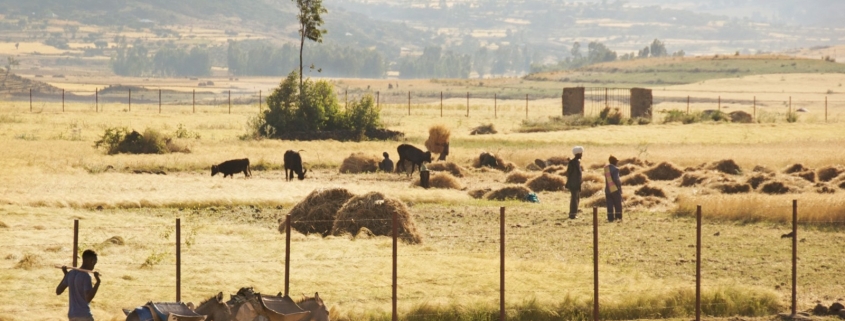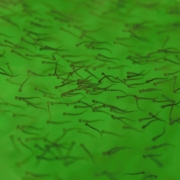HotSpots H2O: Drought, Violence Spread Hunger in Ethiopia
The Rundown
A web of violence, past droughts, and current dry conditions is ensnaring Ethiopia in an ongoing food crisis. Last week, the Ethiopian government called for $1.3 billion in emergency food and non-food assistance for 8.3 million people in 2019. The number of people requiring emergency aid is up 5 percent from last year, largely due to an escalation of violence between communities in southwestern Ethiopia.
The country’s persistent food insecurity can also be ascribed to recurring drought. In 2016-2017, parts of Ethiopia endured the worst drought in decades due to the El Nino weather phenomenon. Rainfall improved in 2018, but dry conditions are once again creeping into the country’s southern and southwestern regions, crippling crops and vegetation.
“The impacts of the climate change-induced droughts of 2016 and before have persisted. Moreover, violence in many parts of the country have added to the burden.” –Mitiku Kassa, Ethiopia’s commissioner of national disaster risk management.
By the Numbers
8.3 million Ethiopians in need of food assistance in 2019, compared with 7.9 million last year and 5.6 million the year before.
4.5 million Acute malnutrition cases in 2018, according to government estimates.
2.9 million People displaced within Ethiopia, as of January 2019. Most have been displaced due to ethnic conflict in the past year.
92 percent Proportion of Ethiopian IDPs who do not have reliable access to clean drinking water.
10 to 50 millimeters (0.4 to 2 inches) below-average Current rainfall deficit in southwestern Ethiopia, which has received minimal precipitation since early January.
$107 million Amount that the Ethiopian government plans to contribute toward emergency aid this year, against estimated needs of $1.3 billion. The government has appealed to international donors to bridge the gap.
On the Radar
Vegetation has “deteriorated significantly” in southern and southwestern Ethiopia, where rainfall is below-average and temperatures are above-average. Elsewhere in the country, however, conditions are still favorable. Vegetation in western Ethiopia, which enjoyed above-average rainfall in the third quarter of 2018, remains healthier than average.
Resources and Further Reading
Are India and Pakistan on the Verge of a Water War? (Foreign Policy)
Explained: India’s policy shift in sharing Indus waters with Pakistan (The Indian Express)
India Threatens a New Weapon Against Pakistan: Water (The New York Times)
India wants to use water as a weapon against Pakistan. A 59-year-old treaty stands in the way.(The Washington Post)
Pakistan says its not concerned over India’s plan to stop flow of water (The Hindu)
Water flowing to Pakistan from eastern rivers will be diverted to J-K, Punjab: Gadkari (The Indian Express)
Kayla Ritter is a recent graduate of Michigan State University, where she studied International Relations and Teaching English to Speakers of Other Languages. She is currently based in Manton, Michigan. Kayla enjoys running, writing, and traveling. Contact Kayla Ritter











Leave a Reply
Want to join the discussion?Feel free to contribute!